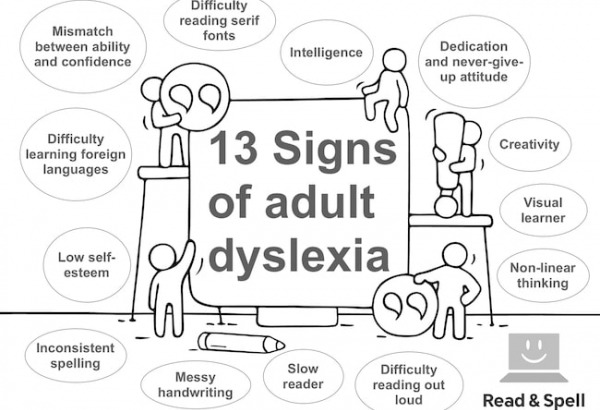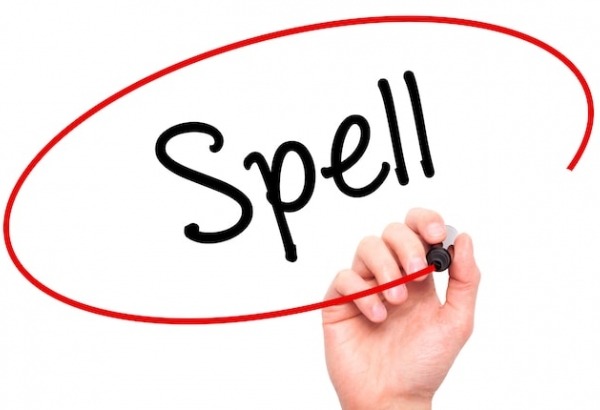Learning to spell for adults

Not all adults have perfect spelling skills. In fact, many have developed bad spelling habits over the years. This is even more so the case today given the nature of communication on social media networks and mobile texting.
Abbreviations are common in order to save space in posts and message chains and people ignore English capitalization and punctuation rules. It’s also the case that individuals who left school early may simply have missed out on learning how to spell in the first place.
And while spelling is only one aspect of productive language knowledge, it tends to be a rather obvious one. You may not know what a word means, but when you misspell something, everyone notices.
Spelling is not a reflection of intelligence. Nonetheless, it is still necessary to know how to spell in order to be successful in academic and work endeavours. Having poor spelling skills in English can cause an adult to be judged negatively by others.
They may lose out on job or career advancement opportunities and often will experience feelings of embarrassment and low self-esteem. Worse still, poor spelling skills can cause individuals not to reach their full potential at school.
This is because when a young adult finds certain words hard to spell, they may rely on more common and less specific vocabulary in writing, or avoid writing altogether. Their written work can appear over-simplified and may not reflect the true extent of their vocabulary.
While it may be embarrassing to practice spelling as an adult, an intervention is often required as it is not a skill that will fix itself. Learning to spell involves targeted work, including repetition and transcription exercises.
Enrollment in a basic adult education course at a local school is recommended, particularly if poor reading skills are also a factor.
Individuals who can’t spell may also wish to sign up for an adult spelling course or use a program or app that runs on a home computer.
It's even possible to learn how to spell and acquire a new skill at the same time! This is the case with mastering touch-typing using Touch-type Read and Spell (TTRS). Originally developed to help learners with dyslexia, it takes a unique whole-word approach and teaches spelling together with typing.

Learning spelling as an adult vs. as a child
Because English spelling is so irregular, children learn spelling at school. Some even compete in spelling bees, which are competitions that cover some of the hardest to spell words in the English language.
However, for adults it is assumed that they already learned the spelling of most words at school. Thus when it comes to people working in specialized fields, there isn’t always the same level of attention to subject and domain specific vocabulary, which may prove problematic.
Again, that’s where Touch-type Read and Spell can help. You can create your own modules that contain the relevant vocabulary you need to practice.
Moreover, most children learn how to spell at the same time as they learn new words.
This means their spelling skills develop along with their vocabulary. On the other hand, an adult with poor spelling skills may have a wide knowledge of spoken language but experience difficulty when it comes to writing down all of the words he or she knows.
An adult who is learning English as a second language can have trouble with English spelling due to the lack of 1:1 sound letter correspondence. In other words, there are many ways of writing the same sound in English.
Spelling is even further complicated if the adult learner’s native language does not have a specific letter, or if it uses a different alphabet.
Reading and spelling skills are related, as spelling is part of the sound-letter mapping children need to decode words.
But while children learn at school, adults may need to be taught how to learn spelling. This can involve mastering memory tricks or understanding that repetition and multi-sensory learning can improve retention.

Specific learning difficulties
Fear of being exposed for bad spelling, reading or writing habits can keep many adults from improving their skills. But sometimes an adult’s struggles with spelling are the result of an undiagnosed learning difficulty that caused them to miss out on crucial early literacy skills or to leave school due to frustration with reading and writing in the classroom.
These individuals can highly benefit from addressing their specific learning difficulty and learning strategies that will help them overcome literacy roadblocks and improve spelling, no matter what their age.
Dyslexia
Dyslexia can manifest in different ways, but it's common for it to cause spelling difficulties rooted in a lack of phonological awareness. Luckily, there are strategies that can help dyslexic adults learn how to spell.
Dysgraphia
Writing difficulties may be a result of dysgraphia, a condition that makes it difficult and sometimes even painful to write by hand. An individual who has avoided writing for most of his or her life is likely to have underdeveloped spelling skills.
Attention difficulties and fine motor skills
ADHD
Individuals with attention difficulties may find it difficult to focus and can have trouble sitting still. This makes it hard to concentrate during writing activities, particularly when it comes to learning spelling rules. Tactile learning via touch-typing can be a solution in these cases.
Dyspraxia
Dyspraxia is related to planning and fine motor skills interruption. However, it can cause problems when it comes to writing words out by hand. Without ample practice writing, an individual may develop poor spelling skills. That’s why learning how to type is an excellent solution for dyspraxic individuals who are looking to improve their skills.

Spelling tips
- Know the rules. They aren’t consistent and there are plenty of exceptions, but it’s still worth learning some spelling rules in English. When you learn a rule, be sure to review a set of common examples that demonstrate it, as well as words that break the rule. You may decide to pick up a page of English text and underline all of the words that conform to the rule. When you’re done, look for the exceptions, as you are sure to find a few!
- Study Dolch Words. Also called Sight Words, these are among the most frequent words in English and account for up to 50% of most texts. They include prepositions, verbs, adjectives, articles and adverbs and overlearning them will allow you to spend more time learning the spelling of harder, less frequent vocabulary.
- Recognize prefixes and suffixes. When one or two letters appear at the start of a word and change the meaning in a consistent way, it is called a prefix. For example, re- means to do something again, such as review, regenerate, reiterate. A suffix added to the end of a word functions in a similar way. For example, we use –s or –es to make a noun plural. English is full of common suffixes and prefixes that you can learn. Familiarizing yourself with them will help you to see the various parts of a word and improve your spelling.
- Read as often as you can. Every language has common combinations of consonants and vowels. The more you read, the more you will be exposed to them and the more familiar they will become. It’s easier to learn the spelling of a word that you already recognize.
- Look for patterns. The human brain is very good at spotting patterns. If you present it with examples of words that contain a similar letter combination, you can learn English spelling rules indirectly. Try taking a highlighter and underlining words with the same or similar spelling across a newspaper page. Next, see if you can write out a rule that describes what you see. Acquiring rules in this way makes them easier to remember, thanks to the extra cognitive energy you expend figuring them out on your own.
- Use mnemonics. Hard to spell words can sometimes lend themselves to visual or auditory cues that create a more robust memory. For example, the word Wednesday can be tricky to spell because the d is silent. To help you spell it correctly, you might picture a bride and think that she is to be wed on Wednesday.
- Spell out loud. Sometimes spelling a word aloud can make it easier for people with learning difficulties who struggle to put letters down on paper. Create a list of words that you want to learn and practice spelling them while you are in the shower or on your way to work. Speaking them and hearing yourself say each letter will create auditory memories that are especially helpful for individuals who are not visual learners.
- Research the origin of words. English is a Germanic language but it has adopted vocabulary from various other languages that it came into contact with over the years. For example, it contains plenty of words of French origin thanks to the Normans having ruled England for a few hundred years. When you research where a word comes from, you may see similar spelling patterns for other words with the same origin, such as Greek words, which tend to be found in science related vocabulary.
- Take a multi-sensory approach. When you learn the spelling of a word and encode it physically, as is the case in handwriting or touch-typing, you are adding muscle memory to the process. The more you generate a word, the more likely it is that you automatize its spelling.

Touch-typing and spelling
A touch-typing course is often a great idea for adults who want to improve their skills. That’s because typing entails repeatedly producing words on a keyboard while seeing and hearing them read aloud. This process encodes spelling patterns in a multi-sensory way and enhances recognition of common letter combinations.
Plus, touch-typing is a skill that opens up job and academic opportunities and can be mastered in as little as a few weeks. When the course is modular, such as is the case with the Touch-type Read and Spell program, it’s also convenient for a busy adult who is juggling work and family life and needs to move through the material at his or her own pace. The best part is it's a way of improving spelling skills without calling attention to ability, as the focus is on typing.
For adult learners
TTRS is a program designed to get adults with learning difficulties touch-typing, with additional support for reading and spelling.
Chris Freeman
TTRS has a solution for you
An award-winning, multi-sensory course that teaches typing, reading and spelling

How does TTRS work?
Developed in line with language and education research
Teaches typing using a multi-sensory approach
The course is modular in design and easy to navigate
Includes school and personal interest subjects
Positive feedback and positive reinforcement
Reporting features help you monitor usage and progress













